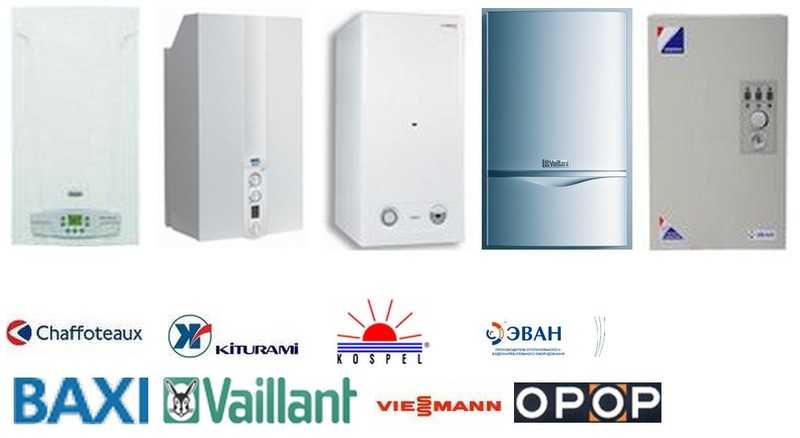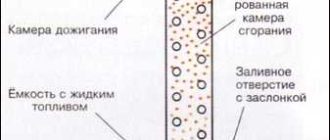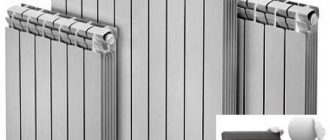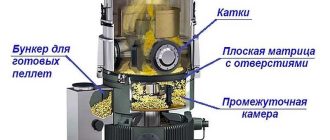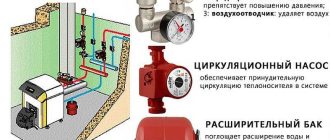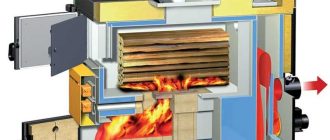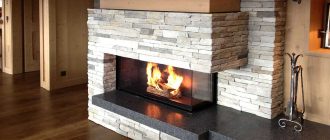Today, gas heating is still the cheapest. Therefore, if there is a main gas pipeline nearby and technical possibilities, it makes sense to install a two-circuit gas boiler. Why two-circuit? Because one device will provide both heat and hot water.
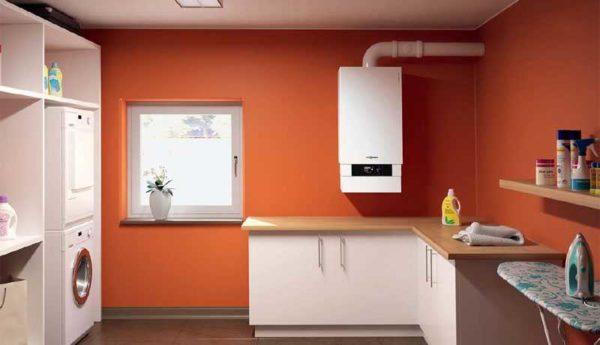
When choosing a two-circuit boiler necessarily pay attention to several parameters:
- the method of installation – floor mounted wall-mounted;
- capacity;
- type of combustion chamber (open, closed);
- type of heat exchanger and the material from which it is made;
- set of service functions.
There are many other points, but these are the main ones. Without them to choose a two-circuit gas boiler is impossible, and we will talk about them further. And first of all, let’s familiarize ourselves with the structure of this equipment and the principle of its operation. Then all the stages of choosing a gas boiler for a house, apartment or cottage will be clear.
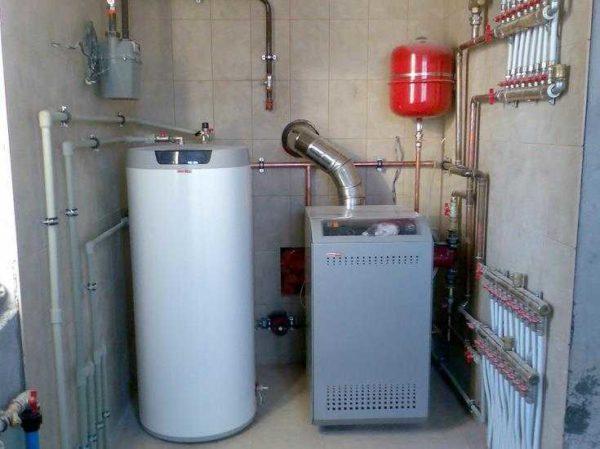
Contents of the article
Structure and main differences
The gas boiler consists of three main modules – burner, heat exchanger, control automation. The burner is located in the combustion chamber, above it there is a heat exchanger, in which the heating medium is heated. The whole process is controlled by automation. It provides safety and changes the modes of operation of the equipment.
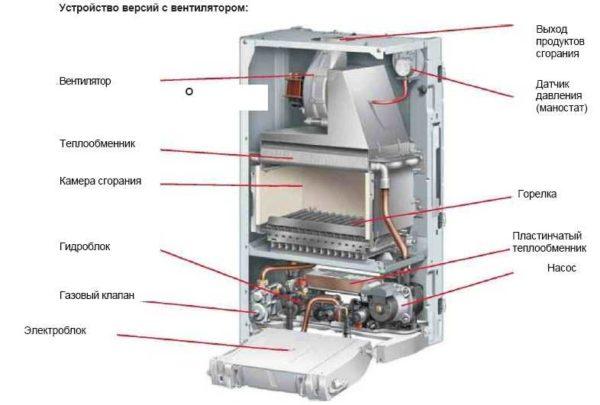
Types of heat exchangers
Two-circuit boiler is characterized by the fact that it can heat both water for heating and water supply. Do it separately, so heat exchangers need special. There are two types:
- Dual heat exchanger. It consists of two separate modules – primary and plate. In the primary is heated coolant from the heating system, in the secondary – plate – water for domestic needs. Primary heat exchanger is a tube with fins, secondary – a set of plates. They are located in different parts of the boiler – primary above, plate below, but are connected to each other because read, a single part.
- Bithermal heat exchanger. It represents two metal tubes of different diameters, inserted one into the other. In the inner tube is heated water for DHW, in the outer tube – for the heating system.
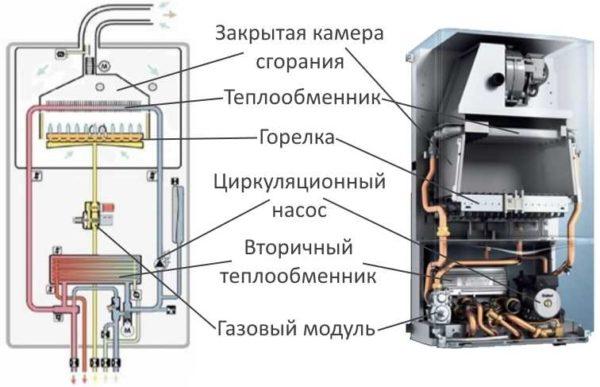
More reliable is the system with a dual heat exchanger. Since heating is a closed system and the coolant circulates in a circle, little limescale is formed. When heating water for DHW, the situation is the opposite – the flowing water is heated, which means that there is a lot of limescale. This part of the heat exchanger periodically requires repair or replacement. If in a dual heat exchanger is possible to replace only the part that heats water for household needs, in bithermal division is not provided, you have to change the whole device, and it is much more expensive. There is another point: a two-circuit gas boiler with a dual heat exchanger at the same time normally works for heating, with bithermal the situation is different – it does not work at all.
Material of heat exchangers
On the choice of a two-circuit gas boiler can also affect the material from which the heat exchanger is made. It can be:
To choose a two-circuit gas boiler on this parameter is not so difficult. Copper seems to be the optimal option. Not without disadvantages – high chemical activity and low melting point – but they have long since learned to compensate. For that there was no overheating is monitored by boiler automation. Chemical activity is neutralized by the use of chemically neutral materials in the heating system – use polymer pipes – polypropylene or cross-linked polyethylene.
Types of burners for gas boilers
In wall-mounted two-circuit gas boilers, atmospheric gas burners are installed. According to the method of flame control, they are:
If we talk about the optimal choice, then these are modulating burners. They allow not only the heating temperature to withstand exactly, but also heat the water exactly to the specified parameters. If you want to choose an economical two-circuit gas boiler, it must have a modulating burner.
Automation
Automation in gas boilers is mandatory – it provides safety, switches modes of operation. There are three main parameters that are constantly monitored:
- the presence of a draft in the chimney;
- gas pressure;
- flame control.
These are key points that simply need to be controlled. If at least one of these parameters is not normal, the boiler will not turn on. In addition, there is an extensive list of additional functions:
These are the functions that are common, but there are still specific: the possibility of connecting (and controlling) solar panels, a warm floor system. There is weather-dependent automation. In this case, there are remote sensors that are installed on the street. According to their data, the work of the boiler is corrected.
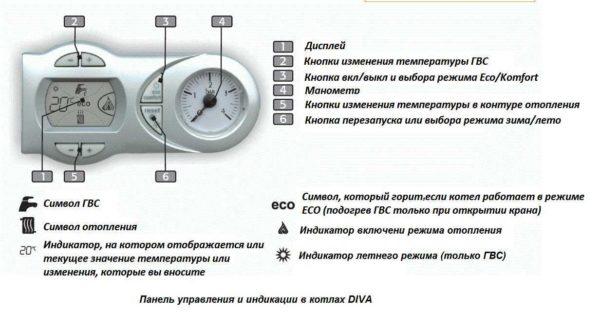
All these functions are laid in the microprocessor, which manages everything. An ordinary user of all the automation is faced with only a remote thermostat, which can be installed in any room and according to the indications of which the temperature can be regulated (another additional possibility). Basically, all interaction with the boiler and its automation is limited to a small panel. All the necessary information is displayed on the screen. There are also buttons with which you change modes, set the temperature.
Principle of operation
Two-circuit gas boiler can work in two modes – heating and water heating. In the boiler itself there are two circuits on which the coolant moves. One of them – with a primary heat exchanger – works for heating, the second – with a plate heat exchanger – for the preparation of DHW water. Switching takes place by means of a three-way valve.
The exact mode of operation of the two-circuit boiler is laid down by the manufacturer, but usually the mechanism of operation for heating is as follows:
With some variations, this algorithm of work is repeated in different boilers. When heating water for domestic needs, everything happens in the same way, but the signal to turn on the burner is the appearance of water flow in the circuit. That is, you open the hot water tap, the burner ignites. Only in this mode of operation, the three-way valve switches and closes the coolant inside the boiler. From the hot coolant the secondary heat exchanger is heated, and from it the flowing water is heated. Heating stops when the water overheats (when the threshold value is reached) or after the tap has been closed. The burner goes out, the circulation pump works until the heat exchanger cools down, then it switches off.
Method of installation
According to the method of installation, gas boilers are floor and wall-mounted. Wall-mounted – compact installations, the size of a small kitchen cabinet. They do not require the equipment of a separate room, can be installed in the kitchen or in another suitable room. The maximum output of a wall-mounted gas boiler is 30-35 kW. This is usually enough to heat premises with a total area of 250-350 square meters. meters. meters.
Floor gas boilers are more powerful, respectively, have a larger size and weight. There are models that can stand in the living room, others require a dedicated room – boiler room. Requirements for installation is prescribed by each manufacturer separately, but usually stipulates the distance from the top of the boiler to the ceiling, the volume of the room and the presence of ventilation.
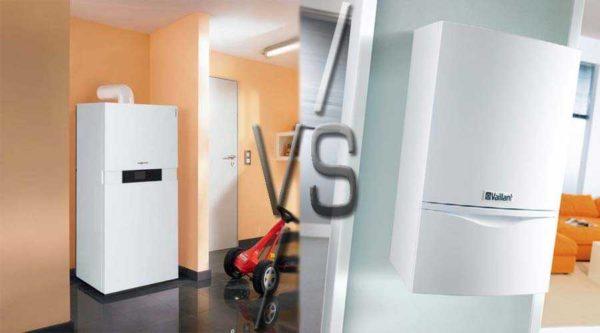
Regardless of the type, a certified project is required for the installation of gas boilers. In the scheme is necessarily present in the gas meter, so if it is not, it will have to buy it. Work on the connection should be carried out by a company that has a license for this type of activity. Only in this case the boiler will be accepted for operation.
It is easy to choose a two-circuit gas boiler by the method of installation. If there is enough power take usually a wall-mounted version, if not – floor.
Type of combustion chamber
The gas burner is located in the combustion chamber. There are two types – open (atmospheric) and closed (with a turbine, forced). Two-circuit gas boiler with an open combustion chamber can be installed only in rooms with good ventilation. When working, the oxygen necessary for combustion is taken from the room, and the combustion products are removed to the chimney with a good draft. Therefore, it is necessary to have a good air supply and a properly working exhaust duct.
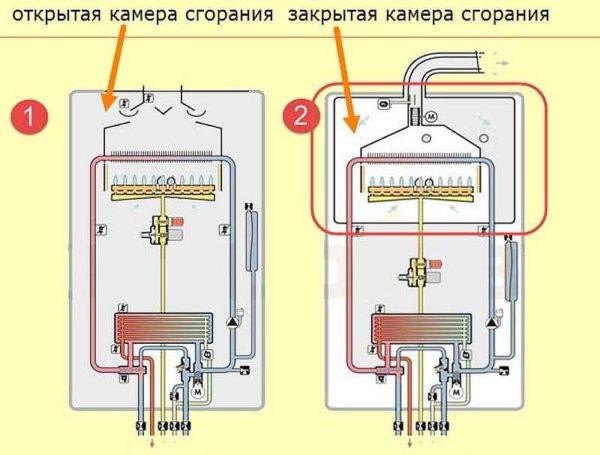
Gas boilers with a closed combustion chamber are characterized by the fact that at the outlet of the chamber is a coaxial chimney (pipe in a pipe) equipped with a fan. The chimney is led out to the street, you can – in the wall near the boiler. On one pipe there is an intake of air from the street, on the second the combustion products are removed, their movement is provided by a fan-turbine.
Which of the combustion chambers is better? The boiler with a closed combustion chamber works more stably – the air enters directly into the combustion zone. But this has a disadvantage: in case of side wind the air flow can be so strong that it will blow out the burner and the boiler will shut down. The second disadvantage of such a solution – freezing and formation of ice in winter. Well and the third disadvantage – such a boiler works only in the presence of electricity – without a turbine, it shuts down. Well, and another small disadvantage – the turbine is not silent. It is almost inaudible, but it is “almost”. Apparently for these reasons, if there is an opportunity (serviceable ventkanal), put boilers with an open combustion chamber. After all, to provide a constant air supply is much easier.
Boiler output
One of the key points of the choice of heating boiler – determining the necessary power. If you approach this with full responsibility, it is necessary to count the heat loss of each room, if it is an apartment or the building as a whole, if the boiler is selected for heating a private house. The calculations take into account the materials of walls, their thickness, the area of windows and doors, the degree of their insulation, the presence/absence of unheated room downstairs/upstairs, the type of roof and roofing material. Geographical location and a whole bunch of other factors are taken into account.
Such a calculation can be ordered in a specialized organization (at least in GorGaz or design office), if you want, you can do it yourself, and you can take the path of least resistance – to calculate, based on the average norms.
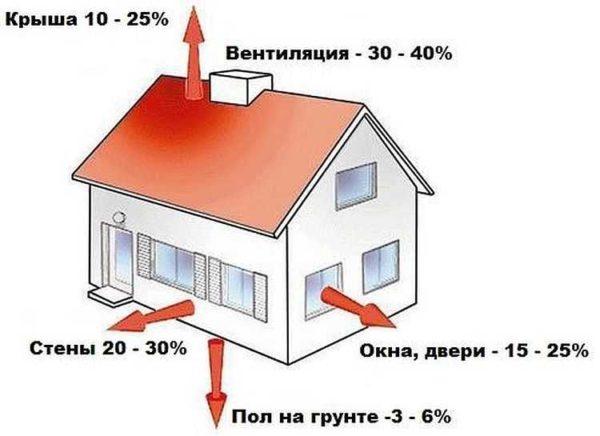
According to the results of all calculations, the norm was derived: for heating 10 square meters of area requires 1 kW of heating power. This norm is suitable for rooms with ceilings of 2.5 meters, with walls with an average degree of thermal insulation. If your room falls into this category, the total area to be heated, divide by 10. You get the required boiler output. Then you can make adjustments – increase or decrease the resulting figure depending on the actual conditions. Increase the power of the heating boiler should be in the following cases:
- The walls are made of material with high thermal conductivity and are not insulated. Brick, concrete fall into this category exactly, the rest – according to circumstances. If you choose a boiler for an apartment, you should add capacity if the apartment is corner. For “internal” heat losses through them are not so terrible.
- Windows have a large area and do not provide air tightness (old wooden frames).
- If the ceilings in the room are higher than 2.7 m.
- If the attic in a private house is unheated and poorly insulated.
- If the apartment is on the first or last floor.
Reduce the calculated power if the walls, roof, floor are well insulated, energy-saving double-glazed windows are installed. The resulting figure will be the required boiler output. When looking for a suitable model, make sure that the maximum capacity of the unit is not less than your figure.
With or without a boiler
It’s about how the water is heated. A conventional two-circuit gas boiler acts as a flow-through water heater. Hot water is often needed not constantly, but in small portions, which leads to frequent switching on/off of the boiler. Such a mode leads to rapid wear and tear of the equipment, but not turning off the water is too expensive. The solution to this problem is a two-circuit gas boiler with a boiler.
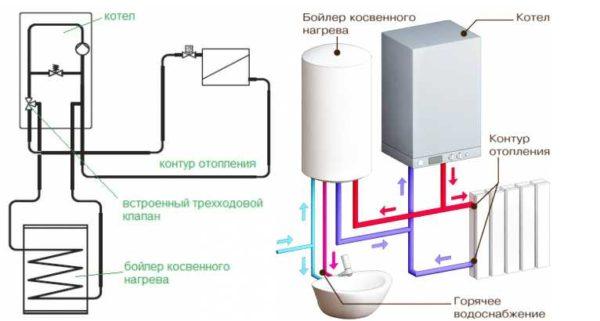
The boiler gas boiler has a small built-in storage tank, which stores a certain amount of heated water. When the hot water tap is opened, the flow rate comes from the reservoir, when the reserve comes to an end, the burner is switched on and continues to heat the water. After the tap has been closed, the boiler runs for a while longer, filling the boiler, then switches off. This mode of operation leads to less wear and tear on the equipment. The disadvantage of gas boilers with built-in boilers – large size, because it is still necessary to place the boiler somewhere. There are models with a remote boiler, then the vessel is connected to the boiler, and can be installed on the floor of the boiler or next to it.
Two-circuit gas boilers: manufacturers
Having determined the technical characteristics, it remains to find a suitable model and choose the manufacturer. It’s not easy at all – there are a lot of firms on the market, prices differ decently. As usual, there are three segments – expensive, medium-priced and cheap.
Expensive – these are products of European manufacturers:
- Italian gas boilers – Ferroli (Ferroli), Beretta (Beretta), Ariston, Baxi (Baxi).
- Not inferior to them in quality German: Viessmann (Weissmann), Wolf (Wolf), Vaillant (Vaillant).
- Korean Navien (Navien) make a worthy competition to the leaders.
This equipment works reliably and without failures, but only when certain conditions are created. First – a stable power supply, without significant deviations in frequency and voltage. Stability of our networks are not sinful, so you need a voltage stabilizer, and better – electronic. The second condition for normal operation is a certain gas pressure in the mains. Most of the German and Italian gas boilers work if the gas pressure of 2 atm and more. The exception – boilers Ariston and Navien.
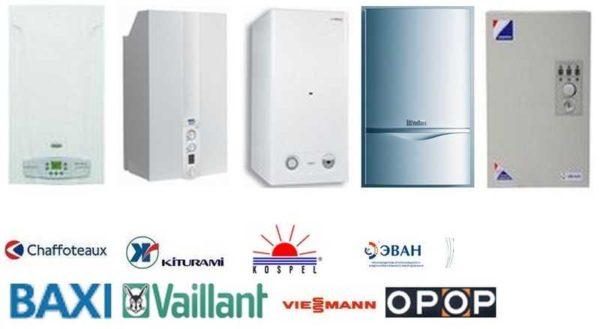
Not badly established themselves in the market wall-mounted two-circuit gas boilers of Russian production – Danko, Protherm (Protherm). They have approximately the same functionality as the “Europeans”, but less acutely react to deviations in the power supply, operate at low gas pressure. What does not please – the Russian “service”.
There are also boilers Bosch (Bosch). The company itself is German, but there are factories in Russia, so it is not easy to determine the geographical belonging of these boilers – some are produced in Russia, some at other factories in other countries. Specialists of the Bosh campaign have developed a new boiler model adapted to our conditions – Gaz 6000 W.

